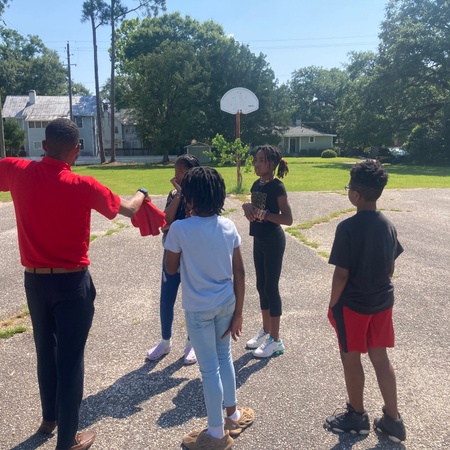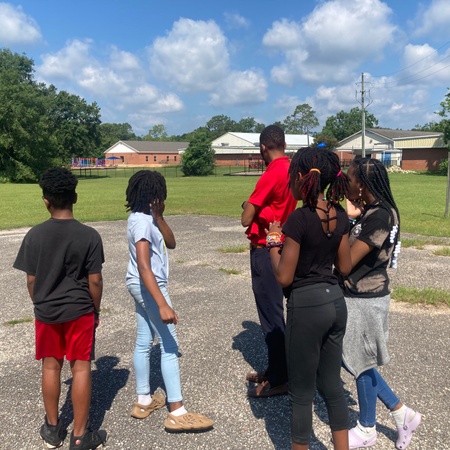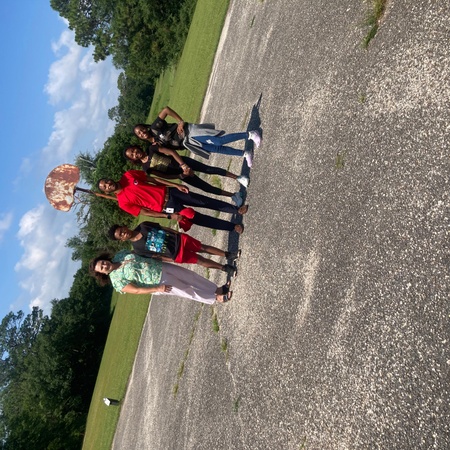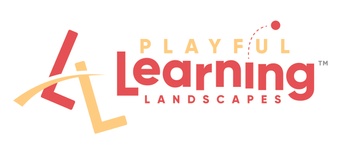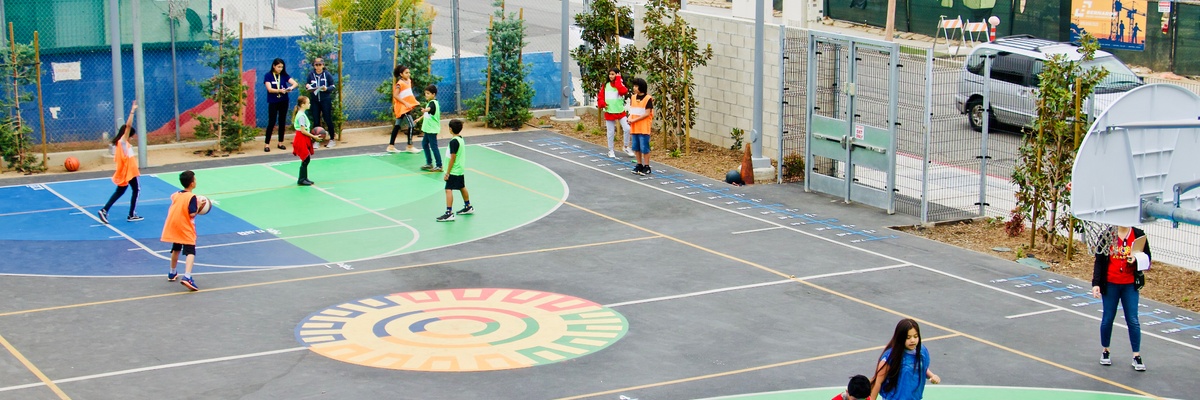

Fraction Ball is the latest offering from Playful Learning Landscapes that promotes playful, physically active, embodied math learning. By repainting the lines on a standard basketball court, children must add fractions and decimals and convert between fractions and decimals to score points for their team.
The traditional 3-point arc is converted into a 1-point arc and smaller arcs closer to the basket represent 1/4, 1/2, and 3/4 point shots on one end of the court, and 1/3 and 2/3 point shots on the opposite end. The numbers are presented as fractions on one side of the court and as decimals on the other side, requiring students to convert between them. Along the side of the court, a number line with both fraction and decimal representations helps students keep track of their score.
Students who played Fraction Ball as part of their Physical Education class as a supplement to classroom math lessons made significantly greater gains in converting fractions to decimals, decimals to fractions, and other related skills, like adding fractions and decimals.
Fraction Ball, like all Playful Learning Landscapes, uses a 3-part design formula:
1. How Children Learn
Meaningful Actively Engaging Socially Interactive Iterative Joyful
2. What Children Learn
Communication; Content; Critical Thinking; Creative Innovation, Confidence, Collaboration
3. Community Values
A successful design will incorporate all 5 qualities of HOW children learn, and at least 1-2 of the 6C’s that define the learning goals, or WHAT children need to learn to flourish. Fraction Ball incorporates all 6C's: Collaboration and Communication (children play structured games on teams to pursue different goals), Content (fractions, decimals, arithmetic, number lines), Critical Thinking (strategizing what shots you need to reach your goal the most efficient way), Creativity (making up new games/goals using the court, e.g., adding in a ball that multiplies all shots by 2), and Confidence (engaging with fractions and decimals in a playful approaches improves confidence when they encounter them in the classroom).
Fraction Ball is the latest offering from Playful Learning Landscapes that promotes playful, physically active, embodied math learning. By repainting the lines on a standard basketball court, children must add fractions and decimals and convert between fractions and decimals to score points for their team.
The traditional 3-point arc is converted into a 1-point arc and smaller arcs closer to the basket represent 1/4, 1/2, and 3/4 point shots on one end of the court, and 1/3 and 2/3 point shots on the opposite end. The numbers are presented as fractions on one side of the court and as decimals on the other side, requiring students to convert between them. Along the side of the court, a number line with both fraction and decimal representations helps students keep track of their score.
Students who played Fraction Ball as part of their Physical Education class as a supplement to classroom math lessons made significantly greater gains in converting fractions to decimals, decimals to fractions, and other related skills, like adding fractions and decimals.
Fraction Ball, like all Playful Learning Landscapes, uses a 3-part design formula:
1. How Children Learn
Meaningful Actively Engaging Socially Interactive Iterative Joyful
2. What Children Learn
Communication; Content; Critical Thinking; Creative Innovation, Confidence, Collaboration
3. Community Values
A successful design will incorporate all 5 qualities of HOW children learn, and at least 1-2 of the 6C’s that define the learning goals, or WHAT children need to learn to flourish. Fraction Ball incorporates all 6C's: Collaboration and Communication (children play structured games on teams to pursue different goals), Content (fractions, decimals, arithmetic, number lines), Critical Thinking (strategizing what shots you need to reach your goal the most efficient way), Creativity (making up new games/goals using the court, e.g., adding in a ball that multiplies all shots by 2), and Confidence (engaging with fractions and decimals in a playful approaches improves confidence when they encounter them in the classroom).
This project has allowed us to start the process of repurposing an old basketball court being the Chickasaw Elementary School. Through the Changex grant we have been able to purchase the materials to seal coat the basketball court as well as equipment to maintain the courts landscaping. With the Initial funding the grant provided it allowed us to start the process and garner the support of the local school board to help cover some of the cost of the project. With the planning phases complete as well as phase I of the surfacing project we were able to open the court to some of our students and community members to test the durability of the surface and configuration of the hoops. With the successful completion of phase I we now feel prepared to move on to phase II which includes the completion of the fraction as well as the addition of colors and school branding designed by the students. I feel confident in saying that the students have thoroughly enjoyed the process to complete phase I and the court has become something exciting for the students and community to look forward to.
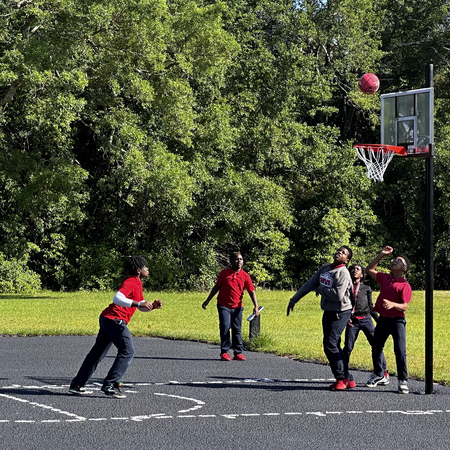
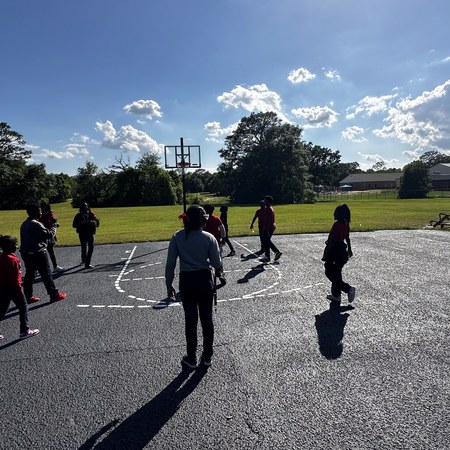
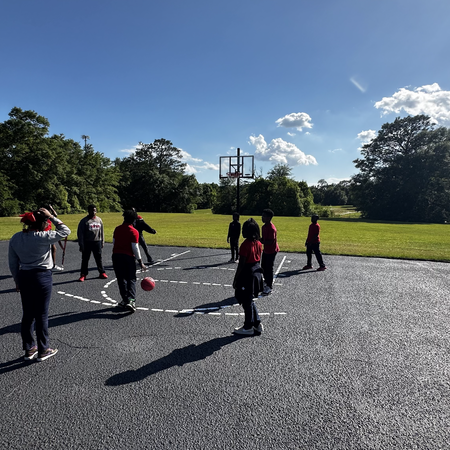
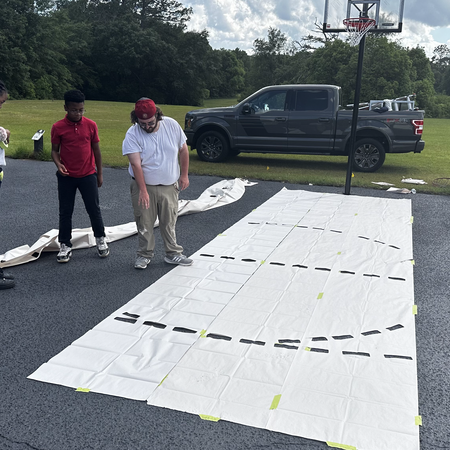
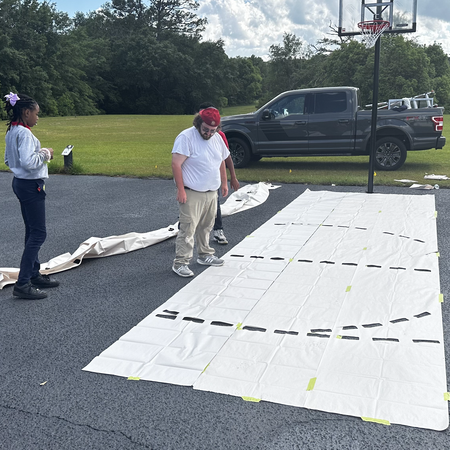
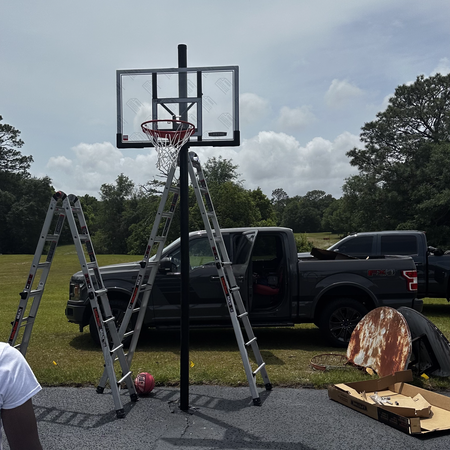
Court has been cleaned, sealed, and the old rims were taken down and replaced. We also sanded and painted the poles. Weather permitting we’re anticipating having the court striped and fractions painted on tomorrow.

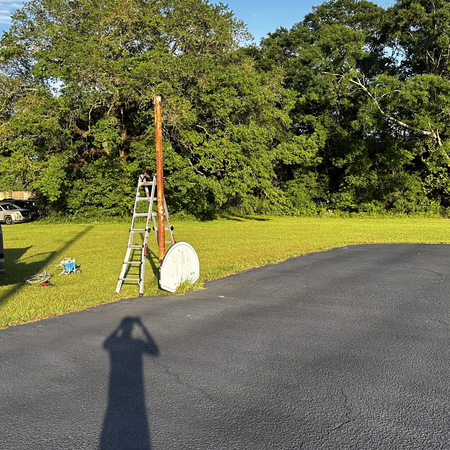
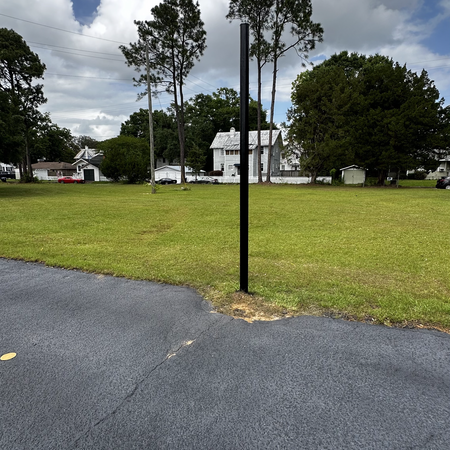
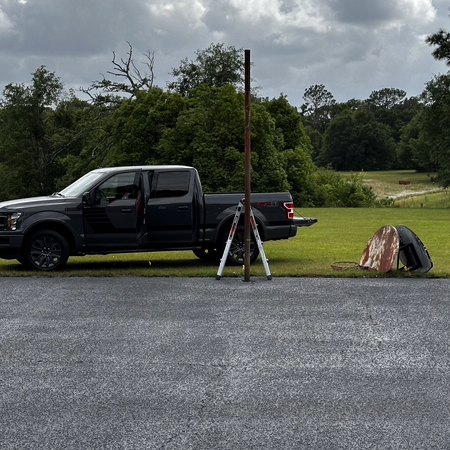
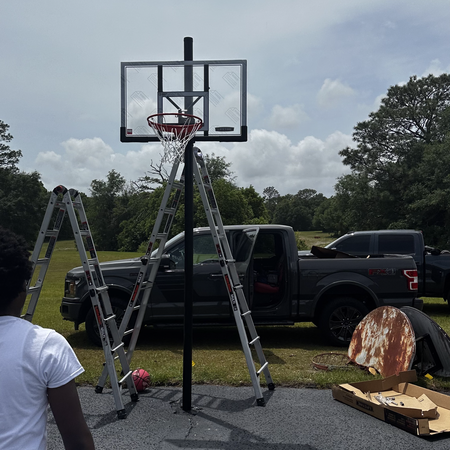
Action plan:
Timeline: When will you be able to start your project?
We will be able to start our project immediately following the release of funding. Our initial task will involve the destruction of the weeds growing through the asphalt this will begin on 7/6/2023. following this task we will begin engaging with a seal coating company to have the court sealed. Once this task has been completed our students will determine paint colors and we will work to create stencils. Our project will follow the order below as determined by our students. Student name indicates a recommendation.
How often will your team meet?
Our team will meet once a week as time permits in students' schedules.
Are there any key dates to share for the project?
6/28/2023-Initial Meeting/Student selection
7/5/2023- Action plan drafting
7/6/2023- Weed/grass- Treatment
Budget: You don't need to share exact prices, but please share how you're planning to spend the seed funding & what costs you're anticipating to get your project up and running:
We are planning to spend the seed funding to cover the cost of paint as well as the cost to have the court seal coated. We may also if the budget permits use the funding to purchase a bench for seating or rims for the basketball goals.
Impact: How will your community benefit from this project?
The community will benefit from this project by having access to an outdoor court for students and the community to play while learning. In the Chickasaw Area, there are little to no recreational basketball courts available for the youth to enjoy. This project will provide a safe and fun location for our students to engage with each other while they learn valuable math skills.
Do you have any measurable goals for your project, such as the number of people participating?
Our goal is to build a sense of community and to measure the number of students/ community members that utilize the court. We will also be able to track and measure growth in our student's math/ fraction performance following the implementation and completion of this project.
Are you hoping to spread knowledge or increase interest in a specific subject?
We are hoping to spread math knowledge with the use of fractions while engaging in a sport. We are also hoping to build interest in sports and community in our area.
Location: Chickasaw Elementary School
80 Grant Street. Chickasaw Al, 36611
All necessary permissions have been granted and board approval has been authorized.
Our Student learners/leaders have been fully involved in the planning phase from determining which court to utilize and creating the action plan. The students have recommended cutting weeds and spraying weed killer on grass growing into the court they have also recommended that we place seating and work on shading an area around the court for visitors.
How will kids be involved in the design and activation of this community project? Our students will be tasked with selecting colors and recommending landscaping ideas around the court they will also be tasked with engaging their peers within the classrooms to support the use of the Fraction ball court and projects supporting the upkeep and beauty of the project.
